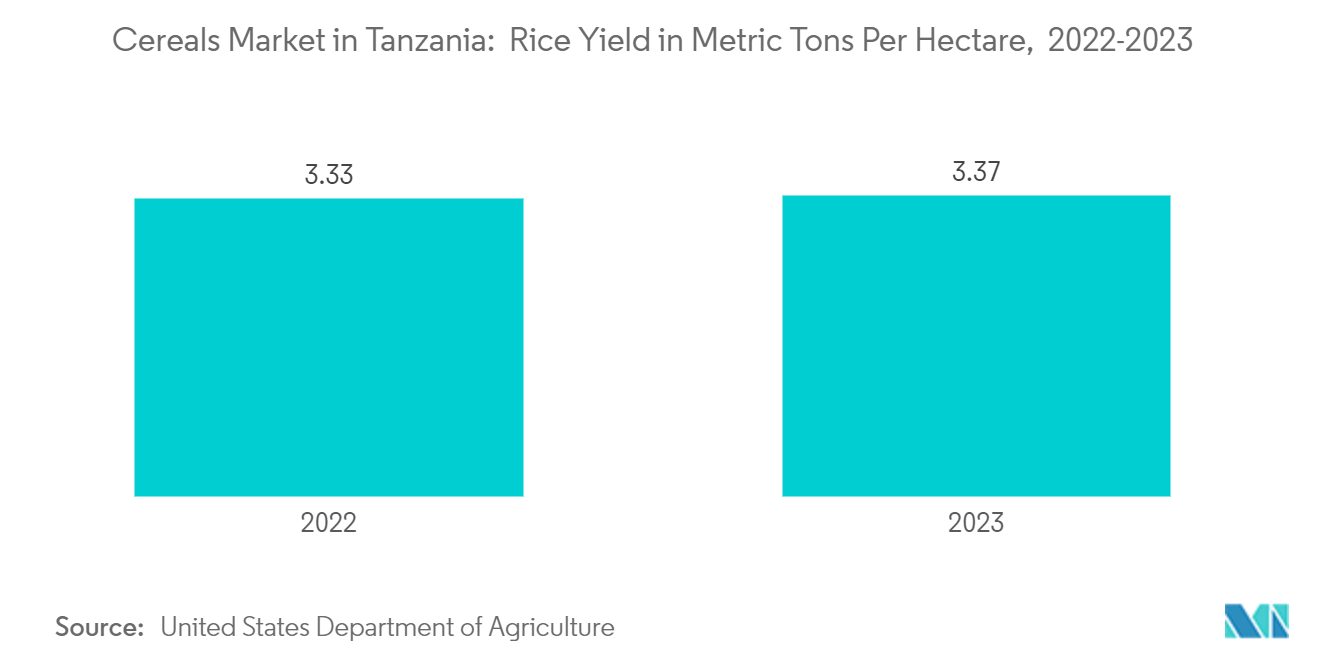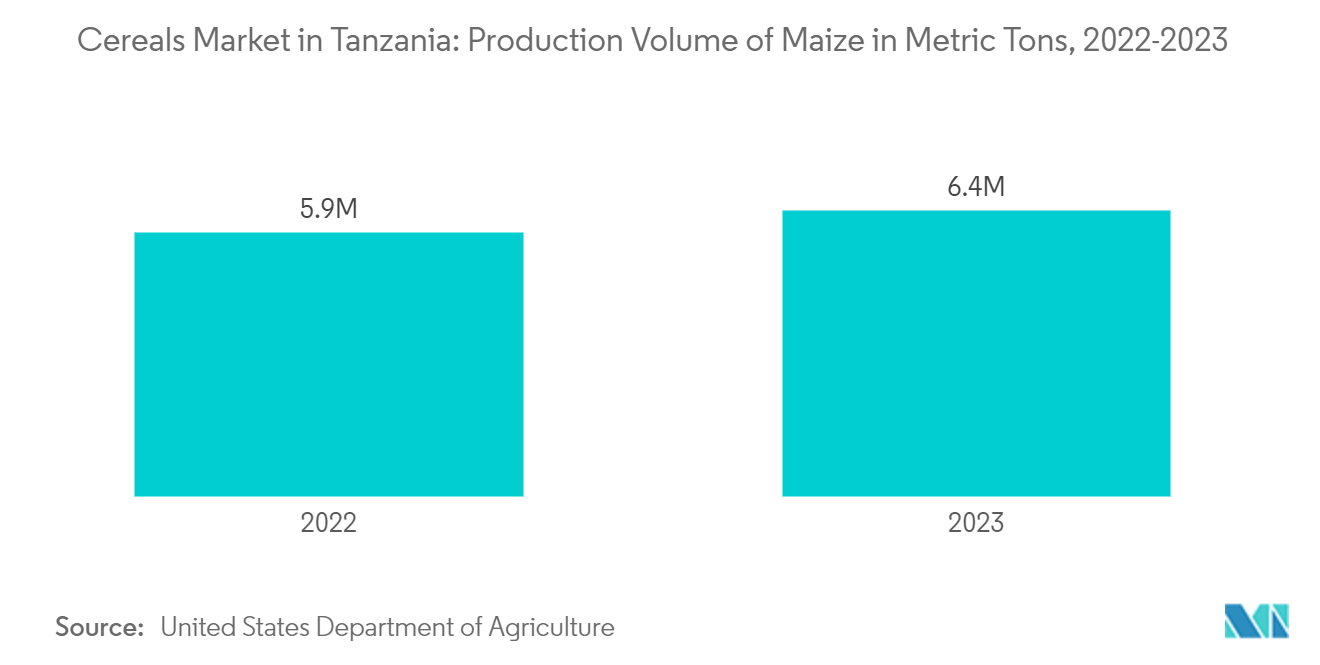Market Trends of Grains Industry In Tanzania
Rising Demand for Animal Feed Accelerating the Cereals Market
Cereals like maize, rice, sorghum, and millet are major ingredients in the production of animal feed. The rising scale of urbanization due to changing consumer preferences in meat products and growing awareness of nutrient management in cattle, sheep, and goats by livestock raisers are projected to boost the demand in the feed market in the coming years. Thus, the demand for cereals such as soybean, wheat, and maize is increasing due to a significant increase in animal feed demand.
Production of crops like maize has significantly increased due to the increasing livestock population, which drives demand for the feed industry. For instance, according to the Food and Agricultural Organization report, in 2022, maize production was 5.9 million metric tons, which increased to 7.0 million metric tons in 2023 in Tanzania. Due to its high energy content, maize serves as a primary ingredient in animal feed, playing a crucial role in formulations for poultry, cattle, and other livestock. Since commercial broiler feed in the country is very expensive and not affordable for small-holder farmers. Maize and protein concentrate traditionally comprise more than 70% of farm-made diets. Which, in turn, is anticipated to boost the cereals market during the forecast period.
In Tanzania, sorghum plays a vital role in animal feed, particularly in arid regions where other crops face challenges. Sorghum is widely grown in regions like Dodoma, Singida, and Shinyanga. It is the third most cultivated cereal in Tanzania, after maize and rice. According to the FAOSTAT, Tanzania's sorghum production reached 1.0 million metric tons in 2023, representing an 11.2% increase over the past five years. Sorghum is rich in energy and provides essential nutrients, making it a valuable ingredient in feed formulations for poultry, cattle, and other livestock. Its higher digestible phosphorus content further diminishes the need for supplemental phosphorus in the feed formulations. Therefore, increasing demand from the animal feed industry is accelerating the production of cereals, which is projected to further fuel the growth of the market studied over the forecast period.

Maize Holds the Significant Position in Production
Maize is one of the staple crops grown in Tanzania, providing over 45.0% of the country's daily calorie consumption. To meet the domestic demand, most farmers grow maize on their farmland. It is one of the largest agricultural commodities in terms of production volume. Maize is also important for poultry feed and a substitute for the brewing industry. Maize is the major cereal grain in the Tanzanian food culture and is utilized in various culinary preparations. For instance, Ugali is the most iconic maize-based dish in Tanzania. It is a dense, polenta-like porridge made from maize flour. It’s a staple food served at almost every meal and is often accompanied by various stews, vegetables, or meats.
In Tanzania, maize is grown in the Iringa, Morogoro, and Ruvuma (southern highlands), Tanga and Arusha (northern highlands), and Kagera (Lake Zone) of the country. According to the United States Department of Agriculture, maize production was 5.9 million metric tons in 2022, which increased to 6.4 million metric tons in 2023. Maize is cultivated in two main seasons such as the bimodal (Vuli) season from October to December and the unimodal (Msumi) season from March to May with harvesting aligning thrice annually to these seasons. Moreover, the government provides training and education to farmers on best agricultural practices, emphasizing the adoption of enhanced maize varieties and sustainable farming methods.
According to the United States Department of Agriculture (USDA), Tanzania's total annual maize consumption in 2023 was 6.3 million metric tons, with white maize being the favored variety. In Tanzania, maize contributes 80% of dietary calories and over 35% of usable protein. Consequently, the rising demand for maize among the population is poised to propel the maize production in Tanzania during the forecast period.


